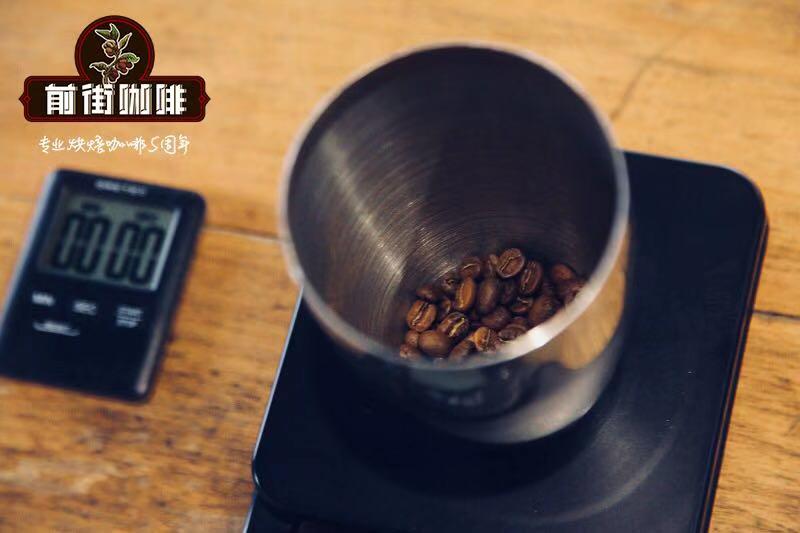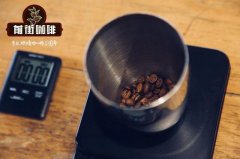What is the processing technology of Rwandan coffee? the characteristics of taste changes of Rwandan coffee

Professional coffee knowledge exchange more coffee bean information please follow the coffee workshop (Wechat official account cafe_style)
Qianjie-introduction to Rwanda Coffee
Rwanda has always been given good coffee growing conditions: high altitude, volcanic soil, rich sunshine and Cabernet Sauvignon. Because many coffee trees are planted in mountains between 1700 and 2000 meters above sea level. Rwandan coffee is a world-class enjoyment, which is not only more balanced than Kenyan coffee, but also can compete with Chinese and American coffee. Generally speaking, Rwandan coffee has the sweetness of fruit, the fragrance of flowers and the aftertaste of black tea.
The farmers here will first pick the coffee beans from the coffee trees with their hands, then send them to the processing desk, and be trampled by the barefoot, singing farmers. These coffees are sweet with a clear taste of lemon and a faint taste of berries and chocolate.
For these developing countries, when the demand for special coffee becomes more and more popular, coffee will naturally become one of the main development directions of the country, in order to make continuous progress and be recognized by the international market. When the coffee beans are separated from the fruit, the brown farmers will sort the beans one by one with rake and water, and then bask in the sun. As the coffee beans are sensitive to air humidity, whenever the breeze blows suddenly, the farmer will quickly cover them with a tarp.
Rwanda coffee flavor
The taste of coffee in Rwanda varies a lot: cherries, grapes, limes, konjac, cantaloupe, oranges, honey, candy, apricots, plums and other areas are different, but generally speaking, all parts of Rwanda are high-altitude and high-nitrogen volcanic soil. If you want to sing high-quality coffee, these conditions are indispensable. Once upon a time, coffee was handled differently from each farm, and beans from different farms would be gathered together and mixed with neighboring ones.
After the genocide, the country began to open up to accept foreign aid, and revitalizing the coffee industry has become the country's top priority. As a result, domestic programs such as PEARL and SPREAD began to appear, providing consistent training for farmers and setting up washing tables to match the traditional coffee treatment in East Africa. Burundi is one of the countries that use this approach and make the most of it. Another point worth mentioning is Africa's unique Fully washed treatment, which soaks coffee beans twice, which is not common in Latin America.
The most commendable thing about Rwandan coffee is that after the coffee cherries are harvested, farmers pick out the immature green cherries first. The ripe cherries are then separated in the sink, and only the red cherries are sent to the sheller. According to the weather conditions at that time, coffee cherries with remaining pectin will ferment for 24-48 hours. The purpose of fermentation is to avoid damaging the taste of coffee. Then send the clean coffee beans that still have sheepskin to dry. All the coffee will be dried on the net bed for 15-22 days, and the water content will be about 11%. When the weather is too hot, the farmer must cover them with a cloth, so that the drying process will be completed prematurely.
The best Rwandan beans should be white, some drying processes should be completed in time, and there should be no cracks in the beans. In this way, more organic compounds can be retained, and the shelf life can be extended while the taste is good. The treatment of high-altitude Rwandan coffee beans by full-water washing is generally sweet and thick.
In short: Qianjie is a coffee research hall, happy to share the knowledge about coffee with you, we share unreservedly just to make more friends fall in love with coffee, and there will be three low-discount coffee activities every month. The reason is that Qianjie wants to make more friends drink the best coffee at the lowest price, which has been Qianjie's tenet for 6 years!
END
Important Notice :
前街咖啡 FrontStreet Coffee has moved to new addredd:
FrontStreet Coffee Address: 315,Donghua East Road,GuangZhou
Tel:020 38364473
- Prev

Madagerba Coffee Region Nicaragua Coffee Flavor Characteristics
Professional coffee knowledge exchange More coffee bean information Please pay attention to coffee workshop (Weixin Official Accounts cafe_style) Front Street-Nicaragua Coffee Introduction Central America is a land bridge connecting North and South America. There are seven countries, namely Belize, Costa Rica, El Salvador, Guatemala, Honduras, Nicaragua and Panama. Coffee is produced in seven Central American countries, including melons.
- Next

Fruit-rich coffee beans recommend the flavor characteristics of Rwandan coffee
Professional coffee knowledge exchange more coffee bean information please follow the coffee workshop (Wechat official account cafe_style) Front Street-Rwanda Coffee introduction before Rwanda did not grow coffee. Coffee was introduced into the country by German missionaries around the beginning of the 20th century. Since then, coffee has been a source of income for many rural families. However, no record in the history of Rwanda can be ignored.
Related
- Beginners will see the "Coffee pull flower" guide!
- What is the difference between ice blog purified milk and ordinary milk coffee?
- Why is the Philippines the largest producer of crops in Liberia?
- For coffee extraction, should the fine powder be retained?
- How does extracted espresso fill pressed powder? How much strength does it take to press the powder?
- How to make jasmine cold extract coffee? Is the jasmine + latte good?
- Will this little toy really make the coffee taste better? How does Lily Drip affect coffee extraction?
- Will the action of slapping the filter cup also affect coffee extraction?
- What's the difference between powder-to-water ratio and powder-to-liquid ratio?
- What is the Ethiopian local species? What does it have to do with Heirloom native species?

